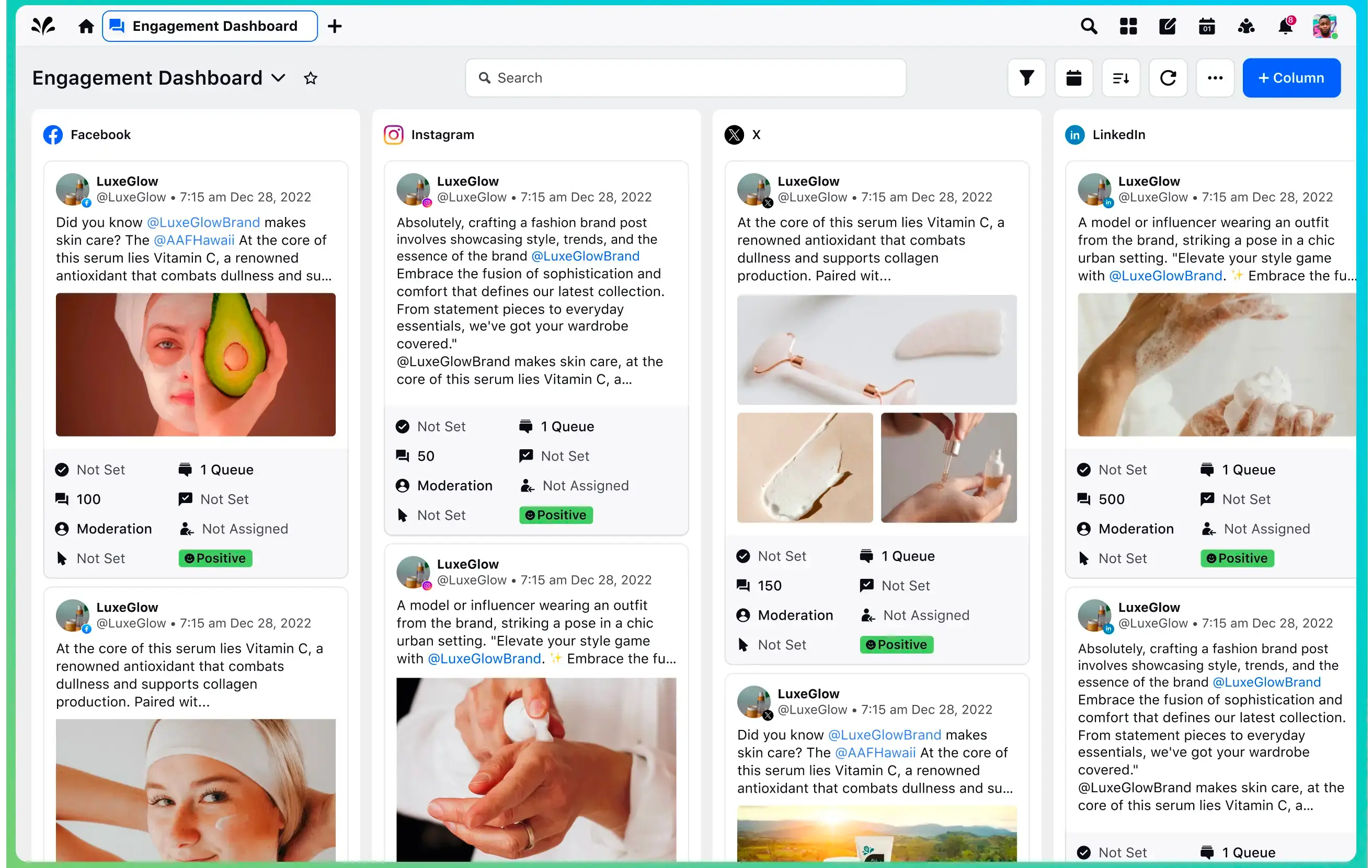The undisputed leader in social media management
For over a decade, the world’s largest enterprises have trusted Sprinklr Social for its in-depth listening, unmatched channel coverage, enterprise-grade configurability and industry-defining AI.

3 effective ways to improve customer engagement on social media
Good news. All that work you put into your social media strategy? It’s working. You planned, you collaborated, and you executed. The likes and the retweets are rolling in. And now your brand is reaping the rewards. Or, are you? Many people might think your brand’s social media strategy is all about publishing to the right person, at the right time, on the right channel. But you know there is more to it than that.
When you create content that resonates with your audience, they are more and more likely to engage with it. In fact, engagement can increase by up to 180% when done effectively. And that means you’re creating opportunities to speak directly with your audience: authentically, in real time, at scale.
Maybe you’re engaging them when they are really happy or excited. Customers love the new product launch you just teased!
Or, maybe your brand made an unintentional misstep with its messaging. Now your audience is hammering you with negative feedback.
Either way, this is now the norm: engaging with customers across social media and other digital touchpoints is a two-way street, and there is always a lot of traffic. Your social media teams — and your wider enterprise — need to be prepared for it. That way, you can ensure that whether it’s positive or negative feedback, you can turn it into an opportunity to delight your customers.
The goals? Be responsive. Empathetic. Crisp. Above all else, human.
Challenges to your customer engagement strategy
Any given interaction with a customer probably seems easy enough. Understand their intent, solve their problem, win their business. For large enterprise brands operating at a global scale, however, things get a bit more tricky. This is in no small part due to the always-on and unstructured nature of messages coming in through your digital channels. Here are some of the common challenges you’ve probably encountered.
Volume: Brands get thousands of messages every day across all of their social media channels. These high volumes make it difficult — and in some cases truly impossible — to respond to customer feedback in a timely manner, or even at all.
Moderation: Hand in hand with volume is moderation. How do you quickly know which messages are engageable, or who should respond? Having social media or community managers comb through endless messages is a waste of time and resources, and fraught with risk. To build a strong social media presence, you should know about community moderation best practices.
Response time: Once your teams are able to classify and engage with messages, time is of the essence. When customers engage with your brand, 75% of them expect a response in 5 minutes or less (IBM). By the time the message is classified, handed off, someone types up a response (assuming they even know what to type), and … time’s up.
Brand safety: Your responses need to be authentic, empathetic, and human. But, they also need to be on brand. In particular, the more sophisticated your engagement tactics get, the more you need protections in place to ensure everyone is compliant with your brand guidelines. Pitfalls abound: references to competitors, striking the wrong tone, misspelling the name of a product, and so on.
Must read: How to create social media policy
Features that support your customer engagement strategy
A fully-featured publishing and engagement platform can help you and your social media teams solve these common challenges. Here are three capabilities that can deliver a huge impact for your brand.
Automation to triage and classify inbound messages
This is a capability that can solve for both inbound volume and moderation. Your solution should be able to scan inbound messages quickly and classify them into categories, engageable vs. non-engageable. Non-engageable means just that: messages that aren’t actionable, which could include spam or just low intent feedback. Engageable messages are the ones that can’t be missed, and can be further sorted to ensure that they are routed to the right person or team for response. Typical classifications might include leads, complaints, inquiries, or compliments.
Key tip: Social listening can help you proactively identify engageable brand mentions on earned channels, capture negative reviews, and understand customer sentiment about your brand.
Be responsive: Filtering out the noise by triaging and classifying messages ensures your team sees and engages with the messages that matter most.
Automation and AI for customer responses
Responding to messages can be just as labor intensive as searching through them in the first place, and time is of the essence. Automation and AI can make a significant impact on how your teams respond.
Automation includes capabilities like auto-responses for direct messages or comments from certain channels, or chatbots enabled with custom business logic that can address customer needs before human intervention is needed.
When you do need a human touch, AI-powered capabilities can give your teams a headstart with features like:
- Smart Compose, to compose messages quickly based on previous interactions
- Smart Responses, to choose from a suggested set of responses
- Canned and templated responses that have proven effective and stay on brand
Be empathetic: AI doesn’t replace humans, it makes them better and faster at understanding customer intent and choosing the right response for the right situation.
Compliance and approval mechanisms
AI can also help you and your teams maintain compliance with brand guidelines. Check and make sure your draft response is compliant with community standards. Or, enable AI-powered compliance checks that ensure relevance, semantics, or biased content is identified before it reaches the customer.
Be crisp: If your response to a customer engagement is off-brand, it can turn your proactive engagement into a brand crisis.
Sprinklr’s unified customer experience management (Unified-CXM) platform can help your social media and digital marketing teams engage customers more effectively, with a human touch.
Learn more about Sprinklr Publishing & Engagement.

